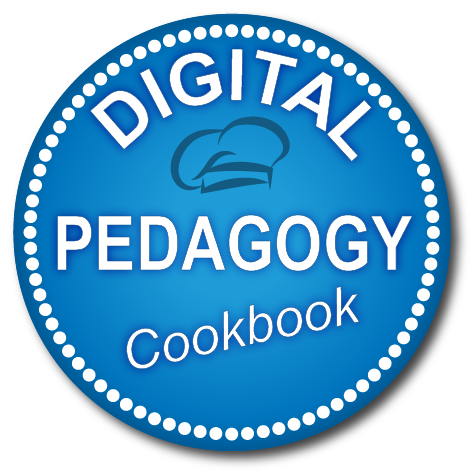Areas of the DigCompEdu
The DigCompEdu framework identify six different areas in which the digital competence of educators is expressed with a total of 22 competences.
The six areas are the following :
1) Professional Engagement: Educators’ digital competence is expressed in their ability to use digital technologies not only to enhance teaching, but also for their professional interactions with colleagues, learners, parents and other interested parties, for their individual professional development and for the collective good and continuous innovation in the organisation and the teaching profession.
2) Digital Resources: Educators are currently confronted with a wealth of digital (educational) resources they can use for teaching. One of the key competences any educator needs to develop is to come to terms with this variety, to effectively identify resources that best fit their learning objectives, learner group and teaching style, to structure the wealth of materials, establish connections and to modify, add on to and develop themselves digital resources to support their teaching.
At the same time they need to be aware of how to responsibly use and manage digital content. They must respect copyright rules when using, modifying and sharing resources, and protect sensitive content and data, such as digital exams or students’ grades.
An example can be found in recipe 61: “Use Pinterest to store and share digital resources with learners”
3) Teaching and Learning: Digital technologies can enhance and improve teaching and learning strategies in many different ways. However, whatever pedagogic strategy or approach is chosen, the educator’s specific digital competence lies in effectively orchestrating the use of digital technologies in the different phases and settings of the learning process. The fundamental competence in this area – and maybe of the whole framework – is 3.1: Teaching. This competence refers to designing, planning and implementing the use of digital technologies in the different stages of the learning process.
In recipe 42: “Google docs as peer review system” you can see this area in practice.
4) Assessment: Assessment can be a facilitator or bottleneck to innovation in education. When integrating digital technologies into learning and teaching, we must consider how digital technologies can enhance existing assessment strategies. At the same time, we must also consider how they can be used to create or to facilitate innovative assessment approaches. Digitally-competent educators should be able to use digital technologies within assessment with those two objectives in mind.
Furthermore, the use of digital technologies in education, whether for assessment, learning, administrative or other purposes, results in a wide range of data being available on each individual learner’s learning behaviour. Analysing and interpreting this data and using it to help make decisions is becoming more and more important– complemented by the analysis of conventional evidence on learner behaviour.
At the same time, digital technologies can contribute to directly monitoring learner progress, to facilitating feedback and to allowing educators to assess and adapt their teaching strategies.
In recipe 55: “Use G Suite Education to Share Online Resources with other teachers” you can find an example of a proposal in this area.
5) Empowered Learning: One of the key strengths of digital technologies in education is their potential for supporting learner-centred pedagogic strategies and boosting the active involvement of learners in the learning process and their ownership of it. Thus, digital technologies can be used to facilitate learners’ active engagement, e.g. when exploring a topic, experimenting with different options or solutions, understanding connections, coming up with creative solutions or creating an artefact and reflecting on it.
Digital technologies can furthermore contribute to supporting classroom differentiation and personalised education by offering learning activities adapted to each individual learner’s level of competence, interests and learning needs. At the same time, however, care must be taken not to exacerbate existing inequalities (e.g. in access to digital technologies or digital skills) and to ensure accessibility for all learners, including those with special educational needs.
An example is found in recipe 7: “Expressive Training with Canva”
6) Facilitating Learners Digital Competences: Digital competence is one of the transversal competences educators need to instil in learners. Whereas fostering other transversal competences is only part of educators’ digital competence in as far as digital technologies are used to do so, the ability to facilitate learners’ digital competence is an integral part of educators’ digital competence.
Because of this, this ability merits a dedicated area in the DigCompEdu framework Learners’ digital competence is captured by the European Digital Competence Framework for Citizens (DigComp). Thus, the DigCompEdu area follows the same logic and details five competences aligned in content and description with DigComp. The headlines, however, have been adapted to emphasize the pedagogical dimension and focus within this framework..
According to the JRC, the core of the DigCompEdu framework is defined in areas 2 to 5. These areas explain the digital pedagogical competence of educators, that is, the digital competences that educators need to foster efficient teaching and learning strategies, inclusive and innovative.
Areas 1, 2 and 3 deals with the characteristic stages of any teaching process, whether with the support of technologies or not. The competences listed in these areas detail how to make efficient and innovative use of digital technologies by areas 2, 3 and 4.
Area 5 recognizes the potential of digital technologies for student-centered teaching and learning strategies. This area is transversal to areas 2, 3 and 4, providing a set of guiding principles relevant and complementary to the competencies specified in these areas.
However, the most important competence in the entire framework, as highlighted by the JRC, is in area 3: “Teaching and Learning”. This competence refers to the design, planning and implementation of the use of digital technologies in the different stages of the learning process.
